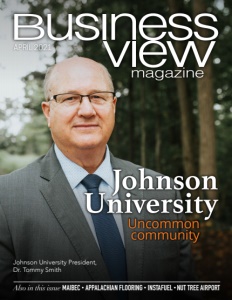New study from RingCentral finds the majority of SMBs welcoming hybrid work
RingCentral, Inc. a leading provider of global enterprise cloud communications, video meetings, collaboration, and contact center solutions has announced the findings of its 2021 State of Hybrid Work report, an in-depth look at how small and medium businesses (SMBs) are managing their workforces during the COVID-19 pandemic.
The report includes findings from interviews with over 1,000 respondents from companies employing from one to 100 employees. It suggests that the majority of small and medium businesses have already embraced people working from anywhere and plan to support a mix of in-office and remote working for the long term future. According to these findings, while the majority of organizations plan to support a hybrid workforce post-pandemic, smaller businesses are the early movers today.
“The way businesses connect and communicate has fundamentally changed and, perhaps contrary to popular opinion, SMBs are at the forefront of this change,” said Faiza Hughell, senior vice president, SMB at RingCentral. “The pandemic forced small businesses to rapidly adapt causing a shift in attitude towards remote work. Now SMBs have emerged as early adopters of hybrid work, leading the charge when it comes to supporting employees working from anywhere.”
Five major themes in the report include:
- SMBs are shifting to hybrid work, now and in the future: Small and medium businesses were typically operating either completely or mostly in-office pre-COVID. According to the data, the majority of businesses are already shifting to hybrid work, with 3 in 5 businesses partially remote. Most respondents expect their organizations to eventually return to work in a less office-dependent way, as 67% say they don’t anticipate returning to the office 5 days a week post-COVID.
- Attitudes toward remote work have evolved: SMBs, and especially companies with 51 to 100 employees, may view remote work as more of an asset than a hindrance. According to the study, 66% of respondents view remote working positively and 1 in 3 view their workplace as “extremely remote-friendly.”
- Disconnection at work is on the rise: Interactions at work have clearly dropped, as more than one-fourth of respondents say they have less frequent work interactions with coworkers, customers, and prospects. However, most expect the amount of in-person interaction to increase slightly in a year’s time, but according to the data, interactions won’t return to pre-COVID levels. Pre-COVID, 44% of respondents said that more than 75% of their job involves interacting with coworkers and customers in person. Now, it’s dropped to 29% and respondents expect it to go to 36% in a year.
- Productivity levels remain mostly consistent: According to respondents, the amount of work they are able to accomplish has mostly stayed the same, with three in five reporting that their productivity levels have remained consistent during the past few months, while only one in four businesses have experienced a decrease in productivity.
- Businesses are using a variety of communication modes to work productively from anywhere: Businesses conveyed that they are using phone calls, texts, team messaging, and video meetings more frequently, with younger employees (age 18-39) preferring team messaging and video and older employees (age 55+) preferring email and phone communication. One third of respondents have a more positive view of video meetings vs. six months ago.
RingCentral has published a full overview of the report online, along with a blog that provides a detailed analysis of the study, and dives into the actions that employees and business owners are taking in light of these findings. www.ringcentral.com
Methodology
- RingCentral and Bredin Inc. conducted an online survey among US companies with 1 to 100 employees.
- A total of 1,000 individuals completed the survey.
- Research was conducted between October 8–19, 2020.
- Characteristics of survey respondents:
- The majority of respondents hold a principal position or are individual contributors.
- Companies fully open for business represented 61%, companies open on a limited basis represented 34%, and companies closed with plans to reopen represented 5%.
- 62% of respondents are aged 56–74, 18% aged 40–55, 10% aged 24–39, 9% aged 75+, and 1% aged 18–23.
- The majority of respondents represent companies that are 2–20+ years old.
- Industries represented include professional services (32%), retail/wholesale (27%), personal services/training (22%), and manufacturing (19%).

